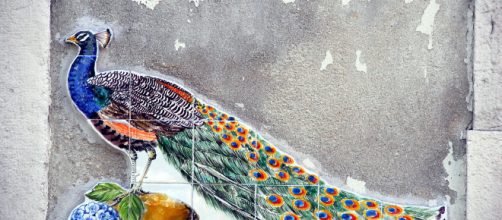Nestled inside a cement slab of graffiti-stained walls with a metal, windowless door serving as the entranceway, is a hidden art gallery, the Greenpoint Gallery. The non-profit, located in the industrial neighborhood of Greenpoint, Brooklyn, serves as a performance, exhibition, rehearsal, and living space for local artists.
The gallery offers two floors of spacious music rehearsal and visual exhibition space for artists in the community. Founded in 2005, the Greenpoint Gallery provides a platform for upcoming artists to learn and create art of various mediums.
Artists in residence are able to subsidize their rent bill by around $300+ by participating in weekly gallery events, workshops, lectures, and art education classes for at-risk NYC youth.
“The owner does a lot for local kids by including them in projects and gives them opportunities to be a part of something artistic and fun,” said Cory Metrick, 25, an artist who works and resides at the gallery.
Politics meets art
In a political landscape, where defunding the arts is a recognized action towards galleries, the Greenpoint Gallery is holding on tight to provide an arts education space that often lacks in traditional public school systems. The arts are often the first place school boards and the federal government decrease funds for or cut entirely.
Government funded programs, such as National Endowment for the Arts, are at risk for being defunded by the Trump administration, even after having endured significant budget cuts over the past couple years. With the assistance of his budget director, Mick Mulvaney, Trump has drafted a list of up to nine programs to cut in order to decrease domestic spending. Among these programs include the National Endowment for the Arts and its sister agency, the National Endowment for the Humanities, according to a New York Times report.
While the Greenpoint Gallery does not receive any government funding from the N.E.A, it plays a role in preserving the passion for art among youth who are unable to access funding for an arts education otherwise.
The gallery earns money from donations, rent paid by the artists in residence, and the weekly gallery parties where guests can purchase drinks or snacks — this money is used to help sustain the gallery as well as fund art supplies for youth organizations.
“It’s an inspiring place to be,” said Steve Conroy, 25, an artist in residence who plays bass guitar at the weekly Friday night gallery gatherings that often have 50 to 100 people in attendance. “The gallery is a great place for artists from all over to get together, meet, and connect.”
Galleries remaining independent against all odds
Unique from many Art Galleries, the Greenpoint Gallery prides itself on being a leading innovator of independent galleries in Brooklyn.
While artists are charged $5 to hang their artwork on the walls, they are entitled to the full commission if their artwork is sold.
With the tentative defunding of arts programs that are already struggling to provide financing for education in the arts, establishments like the Greenpoint Gallery become increasingly important for the survival of young artists. The well lit, open wall space and stages on both floors provide artists, from various specialties, the exposure and creative platform they need in order to showcase their art.
“We are already working with so little. People need a platform of security and comfort to create art,” says Metrick. “This gallery is that platform.”


